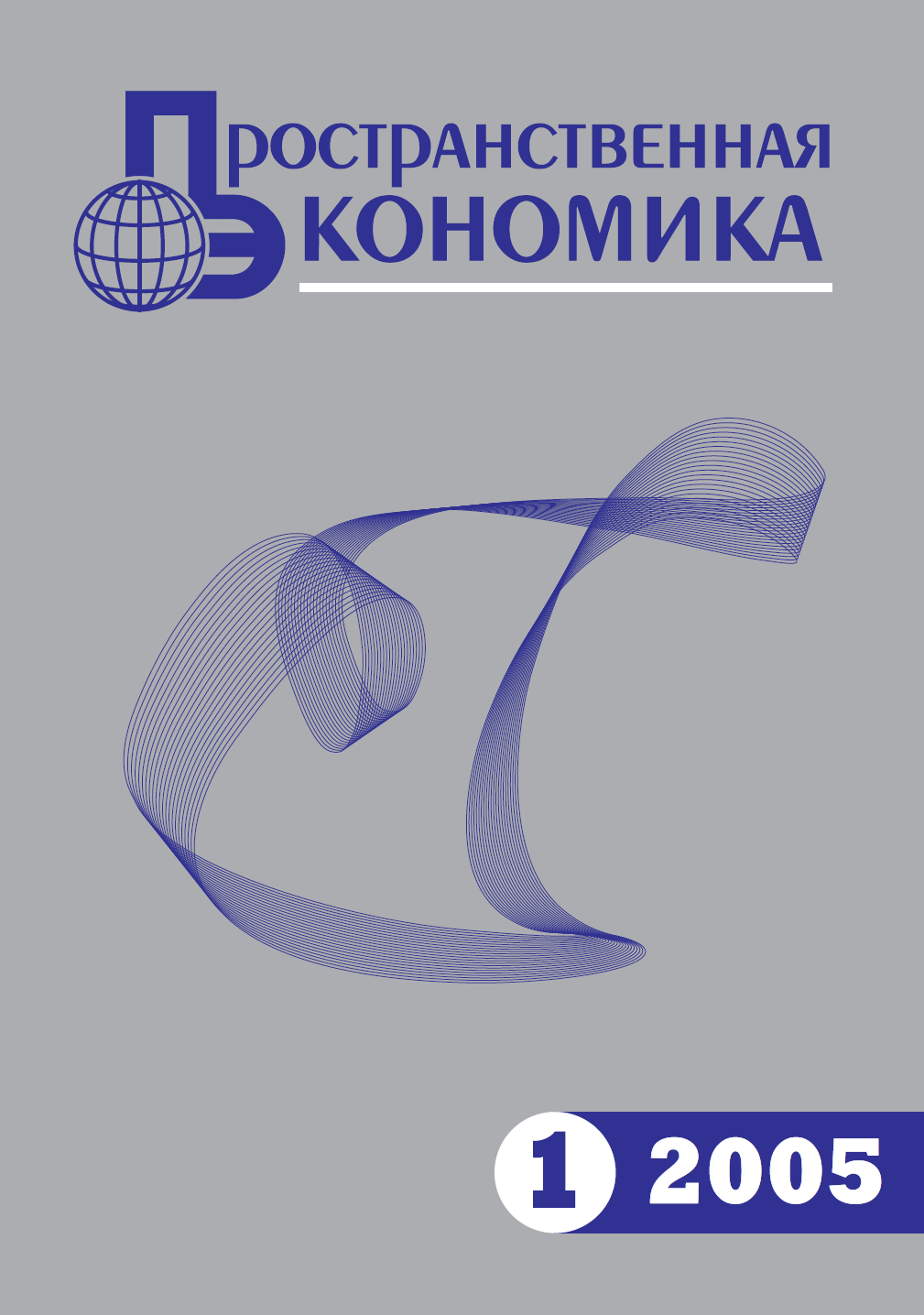| In the section | Articles |
| Title of the article | Modelling and Estimation of Regional Consumption Functions: A Case for the Russian Far East |
| Pages | 27-47 |
| Author | Artyom Gennadyevich Isaev Candidate of Sciences (Economics), Director Economic Research Institute FEB RAS 153 Tikhookeanskaya St., Khabarovsk, 680042, Russian Federation This email address is being protected from spambots. You need JavaScript enabled to view it. ORCID: 0000-0001-6569-2982 |
| Abstract | This paper estimates regional consumption functions based on the error correction model on the basis of the 2000–2002 data on real disposable income and consumption expenditures for 11 regions of the Far Eastern Federal District of Russia. The work reveals the existence of short-term and long-term relationships between the dynamics of income and consumption of the population, which are important for the generation of multiplicative effects in the economies of the corresponding regions. It is found that 7 regions of the Russian Federation (the Republic of Buryatia, Zabaykalsky Krai, Primorsky and Khabarovsk Krais, Amur and Sakhalin Oblasts, as well as the Jewish Autonomous Oblast) are characterized by the presence of both statistically significant short-term relationships between changes in income and changes in consumption, and long-term equilibrium ratios between income and consumption. The indicators of short-term marginal propensities to consume, which are the basis of regional multipliers of autonomous expenditures, have been calculated. For the Republic of Sakha (Yakutia) the data reveals a statistically significant short-term relationship between income and consumption in the absence of a long-term relationship between the indicators. For Kamchatka Krai, Magadan Oblast and Chukotka Autonomous Okrug, the absence of both short-term and long-term interrelations between income and consumption was confirmed, and, consequently, the absence of potential for generation of other multiplier effects in the economy, except for those due to purely inter-sectoral relations |
| Code | 332+330 |
| JEL | R12, D11, D12, O15 |
| DOI | https://dx.doi.org/10.14530/se.2024.4.027-047 |
| Keywords | region, consumption, disposable income, error correction model, marginal propensity to consume, autonomous expenditure multiplier, permanent income hypothesis, Far Eastern Federal District |
| Download | |
| For citation | Isaev A.G. Modelling and Estimation of Regional Consumption Functions: A Case for the Russian Far East. Prostranstvennaya Ekonomika = Spatial Economics, 2024, vol. 20, no. 4, pp. 27–47. https://dx.doi.org/10.14530/se.2024.4.027-047 (In Russian) |
| References | 1. Al Gahtani G., Bollino C., Bigerna S., Pierru A. Estimating the Household Consumption Function in Saudi Arabia: Аn Error Correction Approach. Applied Economics, 2020, vol. 52, no. 11, pp. 1259–1271. 2. Ando А., Modigliani F. The ‘Life Cycle’ Hypothesis of Saving: Aggregate Implications and Tests. The American Economic Review, 1963, vol. 53, no. 1, pp. 55–84. 3. Churbanov S.G., Rozmainsky I.V. Empirical Analysis of the Permanent Income Hypothesis Based on the Post-Soviet Russian Data. Zhurnal Novoy Ekonomicheskoy Assotsiatsii = Journal of the New Economic Association, 2022, no. 2 (54), pp. 76–93. (In Russian). (опечатка в номере) 4. Davidson J., Hendry D., Srba F., Yeo S. Econometric Modelling of the Aggregate Time-Series Relationship between Consumers’ Expenditure and Income in the United Kingdom. The Economic Journal, 1978, vol. 88, issue 352, pp. 661–692. 5. DeJuan J. The Response of Consumption to Income Innovations: Evidence from UK Regions. Regional Studies, 2003, vol. 37, issue 5, pp. 445–451. 6. DeJuan J., Seater J., Wirjanto T. A Direct Test of the Permanent Income Hypothesis with an Application to the U.S. States. Journal of Money, Credit, and Banking, 2004, vol. 36, no. 6, pp. 1091–1103. 7. DeJuan J., Seater J., Wirjanto T. Testing the Stochastic Implications of the Permanent Income Hypothesis Using Canadian Provincial Data. Oxford Bulletin of Economics and Statistics, 2010, vol. 72, issue 1, pp. 89–108. 8. Friedman M. A Theory of Consumption Function. Princeton University Press, 1957, 296 p. 9. Hall R. Stochastic Implications of the Life Cycle – Permanent Income Hypothesis: Theory and Evidence. Journal of Political Economy, 1978, vol. 86, no. 6, pp. 971–987. 10. Holden D., McGregor P. Annual Consumption Functions: A Scottish – UK Comparison, 1971–1985. Regional Studies, 1990, vol. 24, issue 3, pp. 247–259. 11. Mamedli M.O. Permanent Income Hypothesis, Myopia and Liquidity Constraints in Russia. Zhurnal Ekonomicheskoy Teorii = Russian Journal of Economic Theory, 2015, no. 4, pp. 49–57. (In Russian). 12. Naiden S.N., Domnich Y.L. Reaction of Wages to Changes in Consumer Prices Under External Shocks: Far Eastern Regions. Regionalistica [Regionalistics], 2023, vol. 10, no. 6, pp. 59–78. http://dx.doi.org/10.14530/reg.2023.6.59 (In Russian). 13. Ostergaard C., Sorensen B., Yosha O. Consumption and Aggregate Constraints: Evidence from U.S. States and Canadian Provinces. Journal of Political Economy, 2002, vol. 110, no. 3, pp. 634–645. 14. Patterson K. The Stability of Some Annual Consumption Functions. Oxford Economic Papers, 1986, vol. 38, issue 1, pp. 1–30. 15. Polbin A., Fokin N. Note on Cointegration Relationship Between Real Consumption and Real Income in Russia. Ekonomicheskoe Razvitie Rossii = Russian Economic Developments, 2017, vol. 24, no. 10, pp. 6–16. (In Russian). 16. Polbin A.V., Skrobotov A.A. Testing for Structural Break in Aggregated Consumption Function of Russian Households. Voprosy Ekonomiki [Economic Issues], 2021, no. 5, pp. 91–106. (In Russian). |
| Financing | |
| Submitted | 08.11.2024 |
| Approved after reviewing | 11.12.2024 |
| Accepted for publication | 13.12.2024 |
| Available online | 28.12.2024 |
